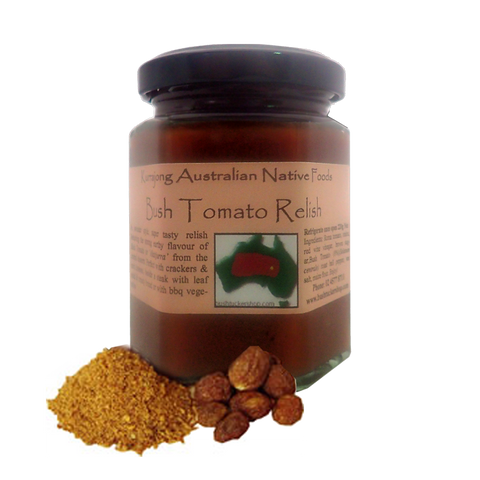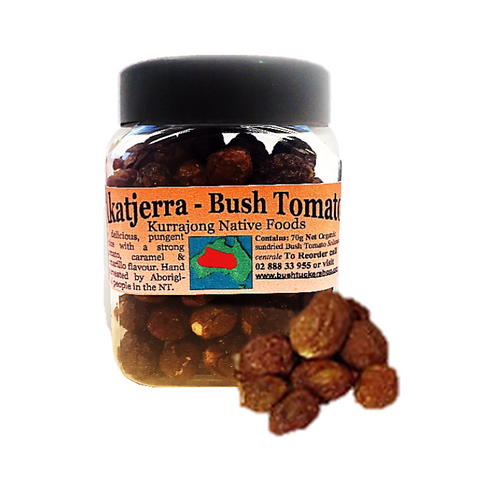
Bush Tomatoes

 |
Natural HistoryBush Tomato Solanum centrale grows in the very arid desert regions of Australia seen in red on the map (Right). It is a small silvery looking shrub covered in tiny hairs and it prefers to grow on the red sand hills where the berries mature to the same colour as the sand. There are several species of Bush Tomato however some are poisonous and to the untrained eye, appear identical to the edible varieties so it is best to leave the picking up to the people who have been eating them for thousands of years. |

|
Cultural History'Akatjurra' is hand harvested by Aboriginal tribes in the Northern Territory. Our bush tomato is collected by the Alyawarra Tribe who's traditional homelands are east of Alice Springs in the northern tip of the Simpson Desert. You can see where this is, the yellow dot on the map above. It is usually the women who collect the Bush Tomato and they leave them on the bush to dry in the fierce desert sun until they are just right to be picked. The tiny dried tomatoes are then collected and further dried before being ground up and then laid out in the sun again. Traditionally the Bush Tomato is very important to the Aboriginal people of central Australia. It was a staple at certain times of the year and could also be ground into a paste and rolled into large balls which were then stored for use in times when food was scarce. Today the traditional name Akatjurra is used for export to Europe to avoid import taxes on tomatoes! |




